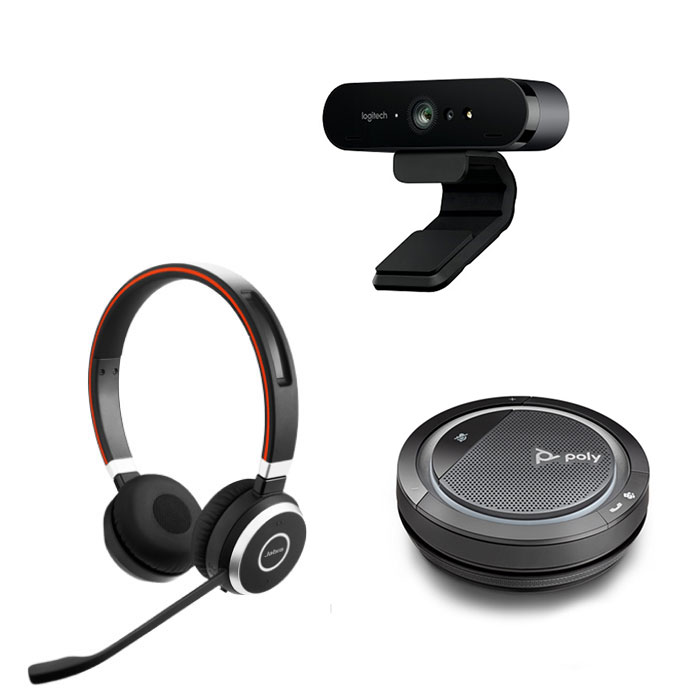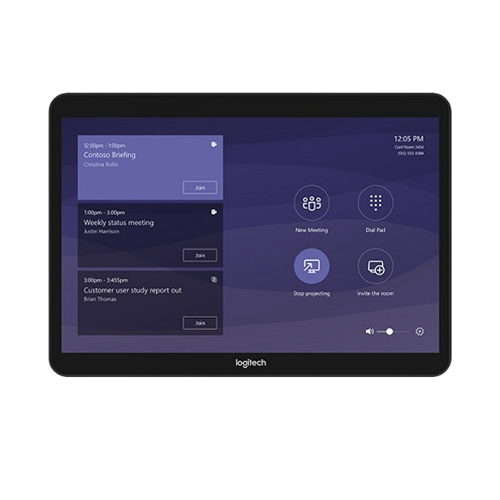A Simple Guide to Headset Technology

As telecommunications technology keeps changing and spawning exciting new product lines in headsets, how do you keep up? Is an over-the-head or earbud design right for you? We have a quick solution. Just take a minute to scan the list of commonly used terms and trademarks below, and we can give you a jumpstart on determining which Plantronics headset solution best suits you!
2.5 mm
2.5 millimeter plugs are standard, round plugs. Many Plantronics mobile headsets come with this size of plug, which should fit standard mobile and cordless phones.
3.5 mm
3.5 millimeter plugs are standard, round plugs often found on stereos and computers. They are larger than the 2.5 mm round plugs found on telephones.
Many Plantronics computer headsets come with two 3.5 mm plugs which connect into your sound card’s microphone input (pink or red) and line output (black, blue, or green).
A2DP (Advanced Audio Distribution Profile)
A2DP is a Bluetooth profile that transmits stereo sounds. Also referred to as the AV profile, it is designed to transfer a stereo audio stream (such as music) from an mp3 player to a headset or car radio. The Plantronics Pulsar headsets support the A2DP profile.
Amplifier
Amplifiers make sound louder. This technology enables headsets to be used with corded phones and phone systems. Plantronics manufactures and markets a wide selection of corded, stand-alone amplifiers, such as the M12. Amplifiers are also included as part of a headset system, such as the S12.
Analog
Analog refers to a type of sound signal. In regards to Plantronics products, it refers to computer headsets that plug directly into a computer’s sound card with two, round 3.5 mm plugs.
AudioIQ®
AudioIQ makes wireless conversations effortless and pleasant, regardless of the environment. For incoming calls, AudioIQ automatically adapts to background noise levels and intelligently improves the receive quality, clarity and volume level. For outgoing calls, AudioIQ reduces background noise for listeners up to 7-8 decibels, or by approximately 50 percent. It also minimizes interference from artifacts such as speech distortions to maintain exceptionally clear voice intelligibility.
Base
Base refers to your headset’s charging base or amplifier.
Behind-the-head
Plantronics recently introduced the new, behind-the-head neckband accessory that adds a unique wearing style to DuoPro® (H171, H171N) and DuoSet® (H141/H141N) headsets. The neckband offers a fresh alternative for those looking for a contemporary wearing style.
Binaural
Binaural headsets cover both ears, while monaural headsets cover only one.
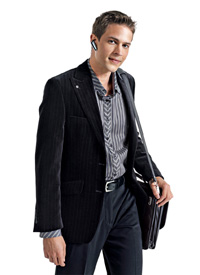
BT
Abbreviation for Bluetooth.
Bluetooth® Profile
Click Here for more information about Bluetooth profiles.
Bluetooth Technology
Bluetooth™ is an amazing new wireless technology using short-range radio links that promises to eliminate the cables and wires that currently connect most computing and communications devices. Plantronics uses this technology in such products as the new wireless mobile headset, the Discovery™ 975.
Call Clarity™
Proprietary Plantronics technology, Call Clarity is an electronic signal processing and noise reduction system found in their amplifiers that enhances transmit and receive quality.
Cell Phone Plug
See “2.5 mm.”
Clearline
Clearline™ is an audio technology used for superior call clarity, and it is featured in the Plantronics Vista M22 amplifiers. It is compatible with traditional phones and headsets as well as wideband VoIP phones and headsets. It provides advanced echo management, delivers consistent and comfortable call volume, reduces background noise, and protects against loud noises.
Computer Plug
See “3.5 mm” and “sound card.”
Control Panel
Control Panel is part of the Windows operating system. Going into the “Sound and Audio Devices” section of the Control Panel allows you to change the settings for your computer’s sound devices. Control Panel’s location varies, but it can often be reached by going to Start>Settings>Control Panel.
Convertible
Convertible headsets offer the choice of two wearing styles, usually over-the-head for stability or over-the-ear for easy on/off convenience. These headsets can easily be "converted" from one style to the other in a few simple steps. Plantronics convertible headsets include the DuoPro® (H171/H171N), the DuoSet® (H141/H141N), and the M170/M175 mobile headsets.
CA (Cordless Amplifier)
CA stands for “cordless amplifier.” These units connect into your phone’s hand receiver port and come with a remote that can be used away from the desk.
CS (Cordless System)
CS stands for “cordless system.” Cordless systems come with both a CA (cordless amplifier) and a headset. See “CA” for more details.
Date Code
The date code of your product designates its date of manufacture, and it can be used to establish your warranty period. The date code is generally listed with your product’s model and part number, although this is not always the case. The date code can be located on the base of the unit, beneath the ear cushion, under the battery, or along the microphone boom. On mobile headsets, it can also be located near the 2.5 mm plug.
DECT
DECT stands for “Digitally Enhanced Cordless Telephony”, which is a type of wireless technology used in certain Plantronics headsets such as the CS50, CS70, CS351, and CS361, among others.
Dongle
Dongle is a term for “adapter.” It generally refers to a Bluetooth adapter that plugs into your computer’s USB port and gives you additional Bluetooth profiles and support. These adapters, such as Plantronics’ BUA-100, are sometimes called “Bluetooth dongles” or “USB dongles.”
Device Manager
Device Manger is a Windows program. One feature of Device Manager is its ability to list the drivers installed on your computer system. You can check there to see if any drivers are missing or incomplete.
DSP (Digital Signal Processing)
In Plantronics products, DSP refers to computer headsets that connect via the USB port rather than the computer’s sound card.
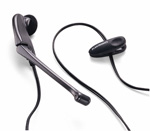
Earbud and In-the-ear style
Earbud style describes a small, discreet headset with a speaker that fits in the ear and the microphone positioned along the cord. The H132N office headset and the MX100 mobile headsets are two examples.
Earclip/Earhook
See “Earloop.”
Eartip
A foam or plastic tip that attaches to a headset and fits snugly inside of your ear.
EHS Adapter
A cable that connects to your headset to your phone and provides a ring alert signal to your headset anytime your deskphone rings. It also allows you to answer and end calls from your headset anywhere within your headset's range.
Firefly® On-Line Indicator
Firefly is the unique in-use indicator light that lets others know you are on the phone. No more interruptions! You can find it on the CT12 cordless headset telephone.
Hand Receiver (Port)
The hand receiver is the portion of the telephone that you hold in your hand when talking. It is generally attached to the phone with a curly cord. The hand receiver plugs into the phone’s hand receiver port (usually a square, modular plug).
Headset (Port)
Some, but not all, phones have a headset port. This headset port may be a round, 2.5 mm plug, or a square modular RJ9 plug. However, most Plantronics amplifiers are designed to plug into the telephone’s hand receiver port rather than the headset port.
HFP (Hands Free Profile)
HFP is a more advanced version of the HSP Bluetooth profile. It allows voice dialing activation, redial, call transfer, and call answer/end capabilities.
HSP (Headset Profile)
HSP is a Bluetooth profile used for voice, mono music, and internet chat programs. This is the most commonly used profile, providing support for the popular Bluetooth headsets to be used with mobile phones.
Link Dropping
Link dropping means that the signal between the headset and the telephone periodically disconnects. If you experience link dropping, we recommend that you establish a new signal between the headset and the telephone by repairing or resubscribing your headset.
Modular
Modular means square and generally refers to modular, RJ9 plugs. Most Plantronics amplifiers use modular ports.
Monoaural
Monoaural headsets cover only one ear, whereas binaural headsets cover both.
Multipoint
Multipoint is also known as “multishifting.” Although all of our Bluetooth headsets can pair with up to 4 different devices, multipoint technology allows some Bluetooth headsets to switch active connections between two paired devices. Non-multipoint headsets can be actively connected to only one device at a time.
Noise-canceling
Noise-canceling refers to a microphone design that greatly reduces the transmission of background noise, enhancing headset sound quality. Noise-canceling headsets are especially effective for offices with employees in close proximity to one another. In mobile applications, noise-canceling microphones reduce background noise in cars, airports or on the street.
N/NC
See “noise-canceling.” Headset model numbers that end with “N” are noise-canceling models.

Over-the-ear
Over-the-ear is used to describe Plantronics headsets that have over-the-ear earloops or other devices to hold headsets in place. The Savi Office WO200, CS70 and the Voyager Pro are some examples.
Over-the-head binaural
When it's important to help filter or screen out background sound, consider over-the-head binaural headsets, such as the HW261N. This style provides sound transmission to both ears.
Over-the-head monaural
Plantronics monaural headsets, on the other hand, deliver sound to one ear. Unless it says otherwise, Plantronics headsets are monaural.
Pairing
Pairing refers to establishing a wireless connection between a headset and a phone. It is often used to describe the initial set up between a Bluetooth headset and phone.
Pairing Mode
Pairing mode is required to make the initial connection between a Plantronics Bluetooth headset and a Bluetooth device. When a Plantronics headset is in pairing mode, it will flash either blue/red or green/red for several minutes. During this time, it is possible to pair the headset to a Bluetooth device.
Passkey
Passkey refers to a password needed to connect a Plantronics Bluetooth headset to a Bluetooth device. For most Plantronics products, this passkey is 0000.
PIN
See “passkey.”
PerSono Software
Persono software is a free enhancement available for download from the Plantronics website. Several versions are available:
PerSono
- Software enhancement for use with DSP headsets
- Provides tone control of headset audio
PerSonoPro
- Software enhancement for use with DA60
- Provides tone control of headset audio
- Gives administrator option to disable headset mute and volume controls
PerSonoCall Enterprise Edition
- Software enhancement for use with compatible soft phones
- CS50-USB, 510-USB
- Provides call answer/end control
PerSonoCall Consumer Edition
- Software enhancement for use with .Audio 910 & Skype only
- Provides call answer/end control
QD
See “Quick Disconnect”.
Quick Disconnect™
On H-Series headsets, the Quick Disconnect™ (QD) Connector is at the end of the headset cable that lets you disconnect your headset from an active call when you need to grab a fax or file, then easily reconnect. With the QD, there's no need to put the call on hold or remove your headset.
Radiolink
An active radiolink means that your headset currently has a live connection with your mobile or VoIP phone. An inactive link means that your headset is not in use.
Receive
Your receive volume refers to the volume of what you hear. Increasing your receive volume will make the caller sound louder for you. It will not affect the way that your voice sounds to the caller.
See “Transmit.”
Remote
Cordless headsets often come with a remote unit. The remote unit is a small, rectangular piece that attaches to the headset. The remote includes a battery and volume controls.
Reset
Resetting your wireless headset can clear static and correct other acoustic issues.
RJ9
RJ9 is a standard, modular plug on most corded telephones. Many Plantronics amplifiers also use this plug size.
Resubscribe
To resubscribe is to reestablish the signal between a wireless headset and its amplifier. If the headset uses Bluetooth technology, this process is called “pairing.”
RX
See “Receive.”
Sound Card
A sound card is a computer component that processes sound and provides ports for audio devices such as microphones, headsets, and speakers.
Sound Recorder
Sound recorder is a program built into the Windows operating system that allows you to make voice recordings. This program can also be used to test your headset. Sound recorder’s location varies depending on your version of Windows, but it can sometimes be found by going to Programs>Accessories>Entertainment>Sound Recorder.
SoundGuard Plus™
An automatic gain control system found in Plantronics amplifiers, SoundGuard Plus provides natural voice tone and removes loud tones, as well as occasional noises and crackles on the line.
Stereo
Stereo sound refers to sound that sends different signals to the left and right sides of the headsets, as opposed to mono sound, which sends just one signal. Stereo headsets are headsets that support stereo sound.
Transmit
Transmit volume refers to the volume of your voice and your headset’s microphone. If you increase your transmit volume, your voice will sound louder to the caller. It will not affect the way that the caller’s voice sounds for you.
See “Receive.”
TX
See “Transmit.”
USB
USB stands for “Universal Serial Bus”, and refers to a common port on computers. Some mobile phones also use USB or “mini-usb” connections to transfer data.
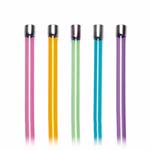
Voice Tube
Also called “attitubes” or “mic sticks,” voice tubes are translucent, plastic tubes which serve as microphones in some Plantronics headsets. Voice tubes are removable and can be replaced.
VoIP
VoIP stands for “Voice-over internet protocol” and refers to sending voice signals and phone calls over the internet.
Windsmart
WindSmart provides wind-noise reduction technology for optimal sound clarity. It’s highly recommended for calls made outside (or in moving vehicles with open windows).
Y-Training Cable
The Y training cable allows you to connect two headsets with QD (Quick Disconnect) connections to one phone. It also includes a mute switch which allows you to mute either headset. This will allow two people to listen to the same call for training purposes.
 Cookies seem to be disabled in your browser.
Cookies seem to be disabled in your browser.

